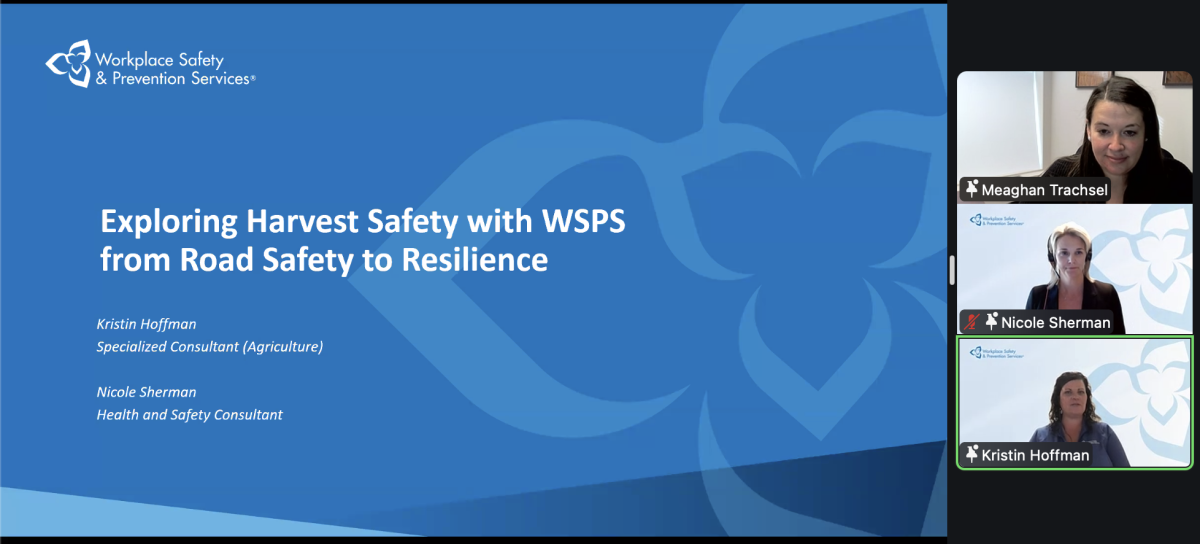Call it counter-intuitive if you like, but a nationwide study finds no link between the proximity of an urban centre and the likelihood of a farmer working off-farm.
That’s not to say farmers aren’t more likely than ever to support their farms with off-farm work. Using figures from the 2006 Census of Agriculture, Statistics Canada on Monday released a study finding 48 per cent of Canada’s 327,055 “census farm” operators in 2006 worked off their holding, up from 44 per cent in 2001.
And there remains a relation between the size of the farm and the likelihood of the farmer seeking off-farm employment. In both 2006 and 2001, over 60 per cent of farmers with gross farm revenues below $10,000 had jobs elsewhere.
Read Also

Exploring Harvest Safety
Kristin Hoffman of WSPS explains measures for increased farm safety around harvest season
That’s compared to just 25 per cent of farmers whose farms had gross revenues of over $250,000 in 2006, up from 19 per cent in 2001.
“For operators of both smaller and larger farms, human capital and the characteristics of farms were significant factors in whether an operator worked elsewhere,” the federal statistics agency said Monday.
“For instance, the typical operator with a university degree was far more likely to work off-farm compared with the average for all operators. Younger operators were more likely to be engaged in off-farm work, as were male operators compared with female operators.”
“Not associated”
Stats that show more farmers taking off-farm jobs shouldn’t surprise anyone. But StatsCan found it “particularly interesting” that the “proximity to urban centres was not associated with the probability of off-farm work participation,” study authors Alessandro Alasia and Ray Bollman wrote.
On the contrary, “there is clearly a higher probability of off-farm work for operators that are more distant from a larger urban centre.”
“Family, community and regional characteristics appear more relevant in determining the joint decision to work off-farm and to operate a smaller holding,” they wrote.
For example, operators who lived in communities that saw rapid growth in employment between 1991 and 2001 were more likely to be involved in off-farm work.
That means the “performance of rural labour markets” is important in the economic well-being of farm operators, StatsCan said. “Census farm operators are more likely to be affected by rural development initiatives that directly address the dynamics of labour markets in the community where the operator lives.”
Interestingly, for the average operator of a farm located “in the closest proximity of a larger urban centre,” the probability of working off the farm was 39 per cent, about two percentage points less than that of the average operator of a farm located 55 km away from a larger urban centre.
Surprisingly, moving from 25 km to 75 km away from a larger urban centre increased the predicted probability of engaging in off-farm work by two percentage points. And a farmer in the “most remote” areas (about 340 km from a larger urban centre) had a nine-percentage-point greater predicted probability of taking off-farm work compared to the average farmer.
The study’s findings suggest that urban areas are not the “core labour market” for farmers working off-farm. Rather, StatsCan said, “urban areas appear to enhance the value of the operator’s labour on the holding.”
Vital to sustain
While nearness to cities may not drive more farmers to work off-farm, that’s not to say rural areas can do without the urban labour market.
“With a growing share of employment opportunities concentrated in predominantly urbanized regions, the linkages between the urban labour market and the rural population remains vital for the economic sustainability of rural areas,” StatsCan noted.
But research on commuters has shown that commuting flows are “not always unidirectional” and not even exclusively dominated by commuters flowing into the cities.
For example, StatsCan said, in southern Ontario, the urban influence is less of a “pole of attraction” compared to “an increasing rural self-sufficiency or a rural-to-rural pattern of interaction.”
Unincorporated, non-dairy
Other factors related to off-farm work included the type of farm and the corporate structure, StatsCan said. Dairy farmers, for example, were “considerably less likely” to report off-farm work compared with any other type of operation.
As well, the agency noted, off-farm work was a more likely option for farmers running unincorporated farms, and for farmers in cases where there’s more than one operator associated with the farm.
In all, Alasia and Bollman noted, the number of “census farm” operators in Canada fell by about 16 per cent between 1991 and 2006, while the number with off-farm work rose by nine per cent.
“In addition to the process of exit from the agricultural sector, a partial adjustment of agricultural labour, through participation in off-farm work, has become a pervasive strategy of census farm operators and their families,” they wrote.















